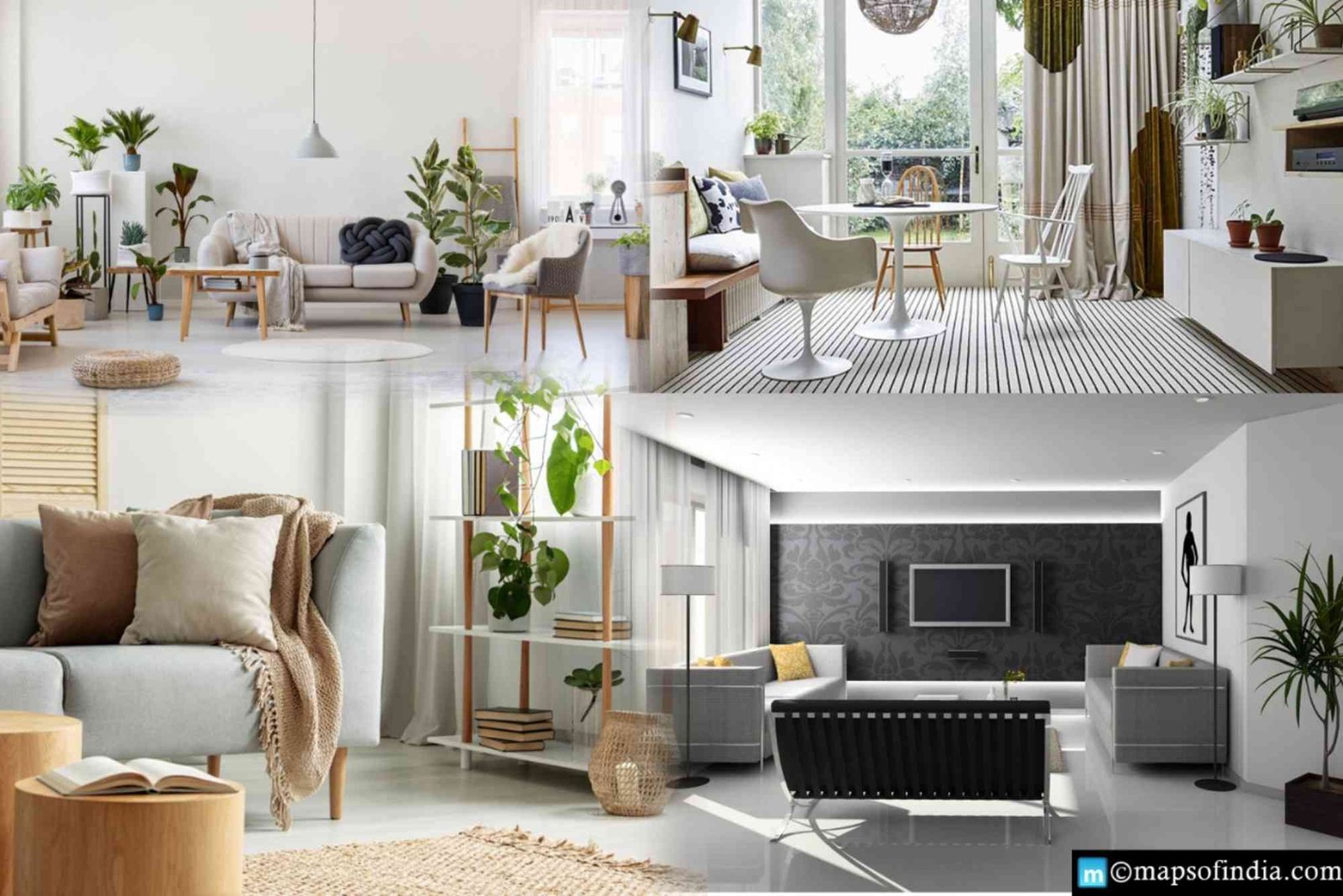Design shapes how we feel and interact with the world. Understanding what to know about design and ideas helps you create spaces that function beautifully and inspire daily life. Whether you are refreshing a home office, exploring fitness-studio inspiration like Orange Theory Mountain View, or dreaming up a multi-purpose mudroom, thoughtful design choices matter. Design is not only about decoration. It blends creativity with strategy to solve problems, guide emotions, and support lifestyle needs. With the right approach, any space can become more functional, visually compelling, and emotionally uplifting.
Why Understanding Design Matters
Design influences behavior, mood, and productivity. Learning what to know about design and ideas empowers better-informed decisions. A visually calm living room encourages relaxation. A bright and energetic workout space, such as the vibe at Orange Theory Mountain View, motivates movement and accountability. Design transforms everyday experiences and directly impacts well-being. Understanding these principles ensures your space works hard for you instead of simply looking appealing.
Exploring Creative Concepts and Space Planning
Many people start decorating without a strategy. However, achieving successful results begins with clear goals, purpose, and flow planning. What to know about design and ideas includes recognizing how space layout drives movement and usability. Every room has a role. A kitchen needs efficient work zones. A fitness space needs open circulation. A mudroom needs storage and easy entry organization. This early stage prevents cluttered or awkward layouts later, and it supports a balanced look that feels intentional instead of improvised.
Setting Design Intent
Intent guides every choice, from flooring to fabrics. When you understand what to know about design and ideas, you create a vision before selecting materials or colors. Ask how you want to feel in the room. A warm, rustic mudroom communicates welcome and warmth. A studio gym like Orange Theory Mountain View evokes intensity through bold branding colors and lighting. The clearer the emotional goal, the more cohesive the final outcome becomes.
Balancing Function and Style
Great design must work well and look great. Prioritizing function while practicing imagination ensures comfort and efficiency. Storage, lighting, acoustics, and traffic flow are core components. Then aesthetics—color temperament, materials, textures, and decor—refine the atmosphere. Thinking deeply about what to know about design and ideas means balancing beauty with practicality instead of choosing one over the other.
Using Color, Light, and Texture Thoughtfully
Color psychology is a powerful tool. Designers consider how hues affect mood and perception. Warm tones like terracotta and cocoa feel inviting. Cool tones like dusty blue or soft gray feel soothing. Energetic environments such as Orange Theory Mountain View rely heavily on vivid contrast to maintain momentum and drive. Alongside color, lighting defines mood and visibility. Layered lighting adds depth and function. Natural textures like wood and linen ground a space, while metal and glass add contemporary energy. Exploring what to know about design and ideas means seeing these elements as emotional drivers, not simple visual accents.
Natural Light and Artificial Lighting
Lighting design impacts performance and comfort. Skylights, windows, and glass doors deliver energy and clarity, making rooms feel larger. When natural light is limited, warm ambient lighting stabilizes emotions, task lighting supports focus, and accent lighting offers drama. Professional studios similar to Orange Theory Mountain View optimize lighting intensity to energize clients. Consider similar layering principles at home to create peaceful mornings and functional evenings.
Texture to Enhance Depth
Texture layers add dimension and richness. Smooth marble, woven baskets, wool rugs, and matte black hardware each contribute a tactile story. When learning what to know about design and ideas, texture becomes a central tool for elevating everyday spaces without overwhelming them.
Incorporating Personalized Style Without Clutter
Minimalism continues trending, yet not every space needs to feel empty. Personal collections, meaningful art, and curated surfaces bring soul and identity. The key is intention. Understanding what to know about design and ideas includes embracing quiet moments and statement objects without turning rooms into galleries of unused decor. Choose pieces that reflect memory or purpose. Showcase character while preserving harmony and simplicity.
Improving Flow and Storage
Hidden storage keeps daily life easy and distraction-free. Thoughtful cabinetry, built-ins, and concealed compartments help maintain calm environments. In transition areas such as mudrooms, combining storage, seating, and hanging space enhances convenience. If you need inspiration for dual-purpose entry layouts, review spaces such as a dedicated Laundry Room Mudroom for ideas on how seamless everyday organization can become.
Inspiration from Functional Fitness Studios
Orange Theory Mountain View demonstrates how design and fitness psychology merge. Bold orange tones symbolize energy. Mirrors increase spatial depth. Sound systems and lighting rhythms amplify performance. This environment teaches valuable lessons about what to know about design and ideas, including leveraging sensory cues and branding colors to influence mood and action. Adopting similar strategies at home supports motivation for workout corners, creative studios, or productivity zones.
Bringing Studio-Inspired Energy Home
You do not need commercial-grade lighting or branding walls to apply these lessons. Start by defining purpose, eliminating distractions, and using lighting or color accents to shape behavior. A small workout nook can harness clear sight lines, durable flooring, and energizing tones. The principle remains: design guides feelings and outcomes.
Material Selection and Durability
High-traffic spaces benefit from strong surfaces and easy-clean materials. Mudrooms, kitchens, and gyms face heavy use. Selecting durable materials ensures longevity. Understanding what to know about design and ideas leads to informed choices such as engineered hardwood, large-format tile, stain-resistant fabrics, and sealed stone. A beautiful room must withstand daily life, especially if it functions like a fitness-style space or busy home entry.
Sustainability and Future-Forward Thinking
Eco-friendly design is no longer optional for many homeowners and businesses. Low-VOC paints, natural fibers, efficient lighting, and sustainable wood improve air quality and reduce long-term impact. Exploring what to know about design and ideas includes anticipating future needs. Modular furniture, flexible layouts, and multi-use rooms support evolving lifestyles and growing families. Longevity matters as much as style.
Style Inspiration for Modern Living
Homes today combine calm, comfort, and purpose. Thin-frame furniture, neutral palettes, and layered textiles create serenity. Pops of expressive color add personality. Modern rustic blends character and warmth. Scandinavian minimalism offers breathing space and peaceful simplicity. Urban industrial adds boldness. Each approach illustrates a core truth: what to know about design and ideas revolves around authenticity to your lifestyle, not trend chasing.
Designing Multi-Function Spaces
Many homes now serve as offices, gyms, play zones, and sanctuaries. Flexible solutions elevate convenience. Integrated shelving, convertible furniture, and hidden charging stations maximize functionality. Thoughtful mudroom concepts, similar to those featured in Mudroom Design Ideas, show how small but efficient design strategies improve everyday routines. When you understand what to know about design and ideas, you reshape rooms to serve you better.
Common Mistakes to Avoid
Skipping planning leads to mismatched furniture and wasted budget. Impulse purchases often cause visual chaos. Overdecorating reduces comfort and purpose. Harsh lighting strains eyes. When learning what to know about design and ideas, patience becomes a design tool. Measure spaces. Create mood boards. Test paint samples. Living with choices before installation reduces regret.
FAQs: Real Questions People Ask
What are the basics of good interior design?
Good design balances function, emotion, and visual harmony. It starts with clear goals, thoughtful planning, and a cohesive palette. Understanding what to know about design and ideas helps ensure decisions build a comfortable, lasting environment.
How do I create a cohesive design style?
Establish a color scheme, consistent finishes, and unified textures. Avoid random accents. Stay grounded in intention, mood, and purpose. Studying what to know about design and ideas sharpens these choices.
How do I make a small space feel larger?
Use light tones, reflective surfaces, large rugs, and uncluttered layouts. Maximize vertical storage and keep pathways open. Applying principles of what to know about design and ideas enhances spacious feeling without structural changes.
Is it better to follow trends or personal taste?
Personal taste creates longevity and comfort. Trends help inspire, but they should not dictate your direction. The heart of what to know about design and ideas is designing for lifestyle, not popularity.
Knowing what to know about design and ideas helps you transform spaces into environments that motivate, soothe, and support your lifestyle. Whether inspired by energetic commercial studios like Orange Theory Mountain View or pursuing a calm home retreat, design plays a powerful role in shaping your experiences. To explore organizational inspiration, visit a Laundry Room Mudroom guide or browse additional Mudroom Design Ideas resources. For broader perspective, explore Related resource: mudroom design ideas and continue your journey toward well-planned living. Take your next step: begin planning a room today and turn intention into a space that truly works for you.




